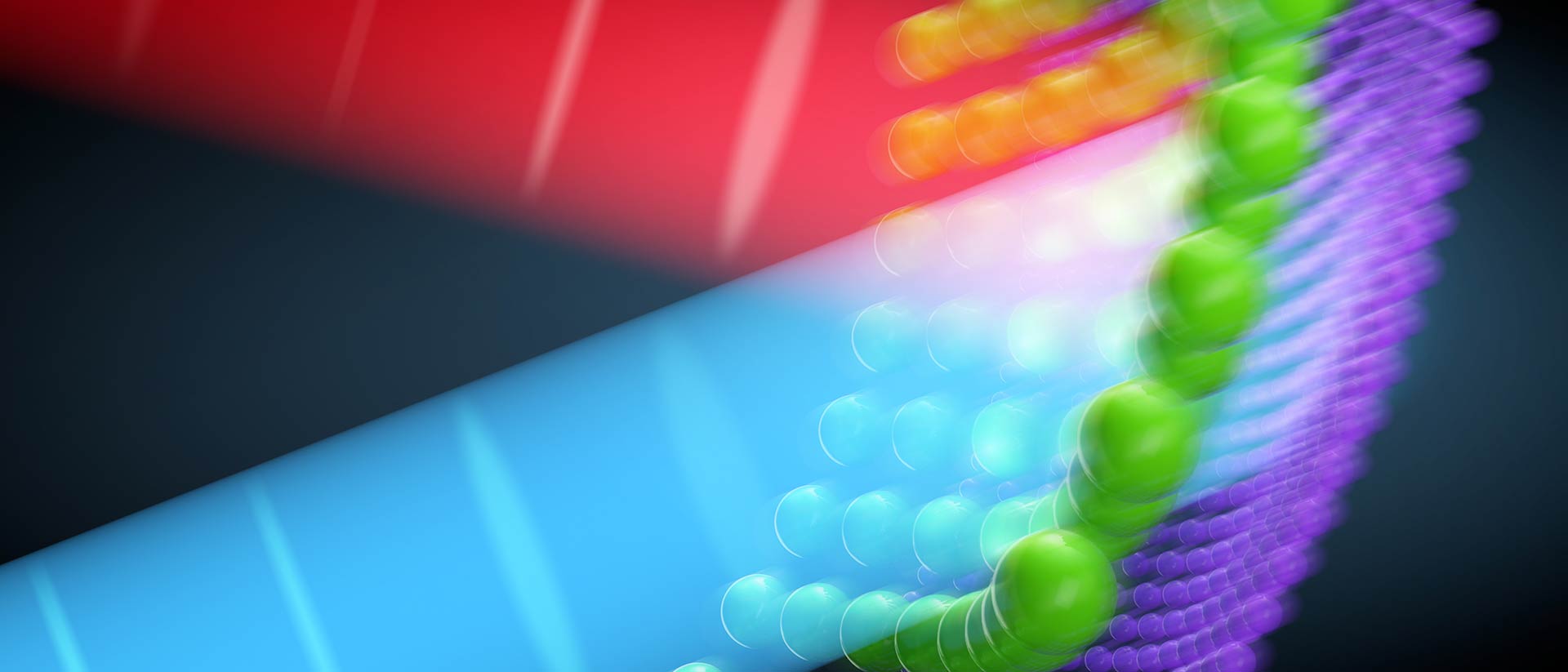
The power of photons

Everyone knows the feeling: wind blows, and we feel it as pressure on our skin. Moving molecules, the particles which make up our atmosphere and are invisible to the naked eye, are responsible for this. But not only does air exert force on surfaces, so does light: as so-called radiation pressure. Jörg Schreiber, professor at the Department of Medical Physics at the LMU in the Cluster of Excellence Munich-Centre for Advanced Photonics, explains the phenomenon – and how his team is utilizing radiation pressure.
How long have we known of the phenomenon of light pressure?
Jörg Schreiber: As early as 1873, James Maxwell realized his theory on electromagnetic waves: that they can exert pressure on objects. Pyotr Nikolayevich Lebedev achieved the first experimental confirmation of this in 1901. In 1972, physicist Arthur Ashkin irradiated small plastic beads and observed a change in motion under the microscope.
How can you explain the light pressure?
Jörg Schreiber: It cannot be explained simply by means of mechanics, because unlike some molecules in the air, light particles – photons – have no mass. Photons are quantum particles that always move at the speed of light. Nevertheless, they carry momentum and energy within themselves. If these particles are reflected off a surface, then their direction changes and energy is transferred – like a table tennis ball bouncing off a paddle. Through this, their wavelength is increased, and kinetic energy is delivered to the irradiated object.
Can you quantify the strength of light pressure, for example that which hits our skin?
Jörg Schreiber: Yes, quite easily. Light pressure can be calculated simply as light intensity – which on a sunny day is about 1 kW per square meter – divided by the speed of light. To use air pressure as a comparison, this corresponds to only about 30 millionths of a millionth of the air pressure surrounding us: equivalent to the difference between the air pressure surrounding us and the ultra-high vacuum conditions produced in particle accelerators or found in low earth orbits, e.g. where the International Space Station revolves around our globe.
It sounds weird that light actually exerts pressure on surfaces or on our skin.
Jörg Schreiber: Yes, it does. The pressure of light is very low, but has a constant influence on us, like air pressure – we are also not consciously aware of that.
How and where can light pressure be utilized?
Jörg Schreiber: Light pressure in connection with lasers is especially interesting: here, light is extremely highly concentrated and many photons can be concentrated in a confined space. The full force of the photon is already being used in many areas – for example, to steer cells under the microscope. In the Laser Interferometer Gravitational-Wave Observatory (LIGO), the light pressure is so massive that it is used for calibration measurements.
How does your team use light pressure?
Jörg Schreiber: We fire high-intensity laser pulses at extremely thin, typically diamond-like film that consists of only a few atomic layers of carbon. The light pressure drives much lighter electrons forwards – like a sail. The ions – charged atoms – are pulled behind these by the electric forces, and can currently be accelerated to around ten percent of the speed of light. The result is ion radiation, driven by the radiation pressure of ultra-short laser pulses. Ion beam radiation with enough energy can be used for the treatment of tumors in cancer therapy. Currently, this high-energy radiation is produced by large, expensive accelerators. Laser technology is not yet able to provide equivalent quality. However, it has the potential to supply the necessary technology for medical use in the future – along with offering new applications – in a cost-effective and space-saving way.
What visionary applications might be possible with light pressure?
Jörg Schreiber: There is an idea to send a lightweight sail equipped with micro-technology, such as mini cameras, out into the universe. The ‘StarChip’ fleet would be powered using light pressure from lasers on Earth or in orbit. I think the idea is incredibly exciting and not unrealistic, although there are still a number of hurdles and concepts that need to be reviewed. Who wouldn’t want to contribute to this? In a few decades, tiny nano-ships might be sailing through space, driven only by pulses of light, and we could be communicating with the first aliens on Facebook.












